CC-JMG-12-11-14-01
12/22/11 Jason still refused food, which led to his being forcefed by aquarists Christian Legner and Kristin Clark. First his tank was drained of the salt water so they could lift this 112 lb. patient out of the tank and place him onto an improvised table (a large, upside-down portable tub) which was covered with a towel to prevent his slipping around. As one person secured his body and head the other inserted and adjusted an instrument to keep Jason’s beak open during the feeding.
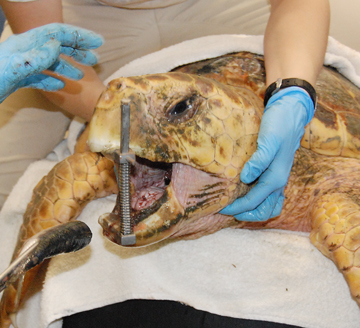 Using long forceps, sardines, each weighing approx. 110 to 150 gm. and cut in half, were inserted into the underweight turtle’s
Using long forceps, sardines, each weighing approx. 110 to 150 gm. and cut in half, were inserted into the underweight turtle’s 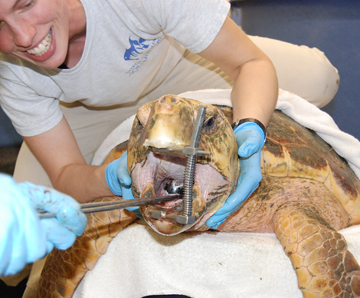 esophagus. A sea turtle’s esophagus contains papillae which are sharp and point towards the stomach, thus, food that reaches that point will not come back out of the mouth. After a few pieces, something was used to push the food well into the esophagus.
esophagus. A sea turtle’s esophagus contains papillae which are sharp and point towards the stomach, thus, food that reaches that point will not come back out of the mouth. After a few pieces, something was used to push the food well into the esophagus.
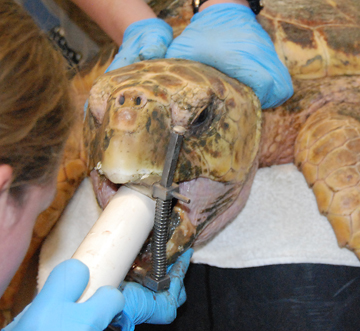 Due to the large turtle’s strength and the physical positions the two aquarists were in, they switched positions midway thru the feeding. After approximately 650 gm of fish, Jason got to relax, mouth closed. We all know how great that feels from going to the dentist.
Due to the large turtle’s strength and the physical positions the two aquarists were in, they switched positions midway thru the feeding. After approximately 650 gm of fish, Jason got to relax, mouth closed. We all know how great that feels from going to the dentist.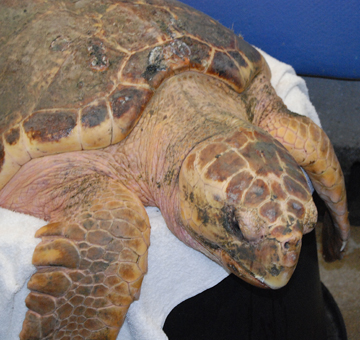
Jason was returned to his tank and had consumed enough food for this first feeding. SUCCESS!
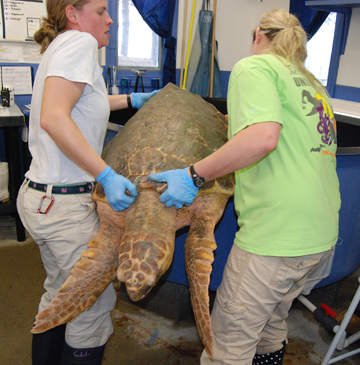
If you are interested in learning more about the sea turtle anatomy, download “The Anatomy of Sea Turtles” by Jeanette Wyneken, Ph.D.
http://www.sefsc.noaa.gov/turtles/TM_470_Wyneken.pdf
